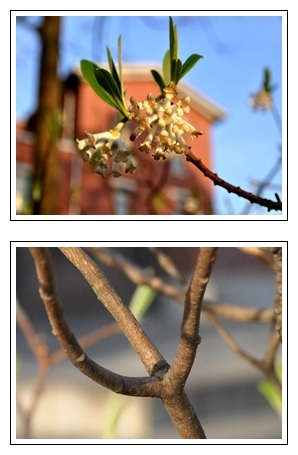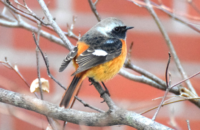
中学生のみなさんが毎日の学校生活を送る立志館周辺には、気づかれずにひっそりと咲いている花々が数多くあります。
写真の花は筒状の花が密集して咲いていて、まるで花火のように可憐です。さらに枝に注目すると1本の枝から三叉(さんさ)するという特徴に気付きます。
この植物はミツマタ(ジンチョウゲ科ミツマタ属)で、紙幣(日本銀行券)の原料の植物です。
国立印刷局によると、日本のお札の紙は、ミツマタ、アバカ(マニラ麻)などが原料で、特にミツマタは、古くから和紙の原料として使われ、1879年からお札用紙の原料として利用されてから、現在まで受け継がれているようです。
紙幣を作るには、まずミツマタの表皮を剥ぎ取り、高温で蒸し、細かく刻んだ後、水に溶かします。繊維が絡みやすいようにさらに細かくしたあと網の上に流し薄い層を作ります。その後乾燥させて出来上がりです。繊維はとても丈夫で、間違って衣類のポケットに入れたまま洗濯しても形がくずれにくいのです。
さて、このミツマタはどこにあるのでしょうか。花のあるうちに探してみて下さい。
As the students study and play around the Risshikan building, many of them would have discovered a variety of flowers. One of them, that looks like a fireworks display, is Mitsumata (Oriental Paperbush), which commonly has three branches that grow from one larger branch. Bark of the bush is used by the Bank of Japan in the production of paper bills. Because it was traditionally used to make Washi (Japanese Paper), the bank began using it to make paper bills in 1879, a practice that still continues until today.
Please try to find these bushes while the flowers are still in bloom.



